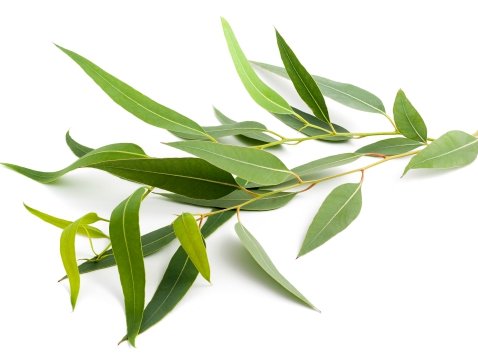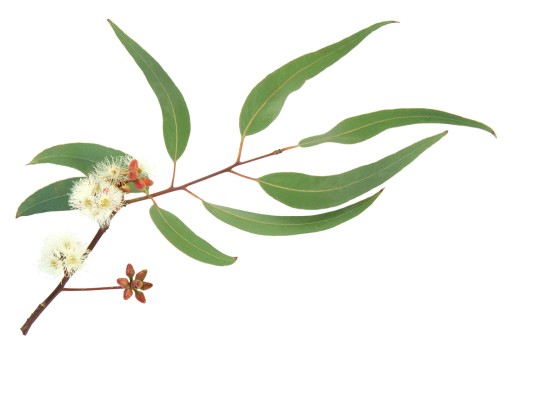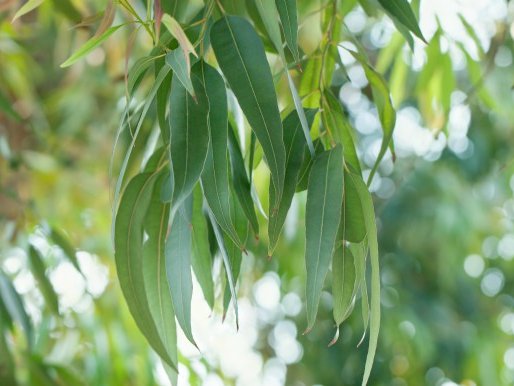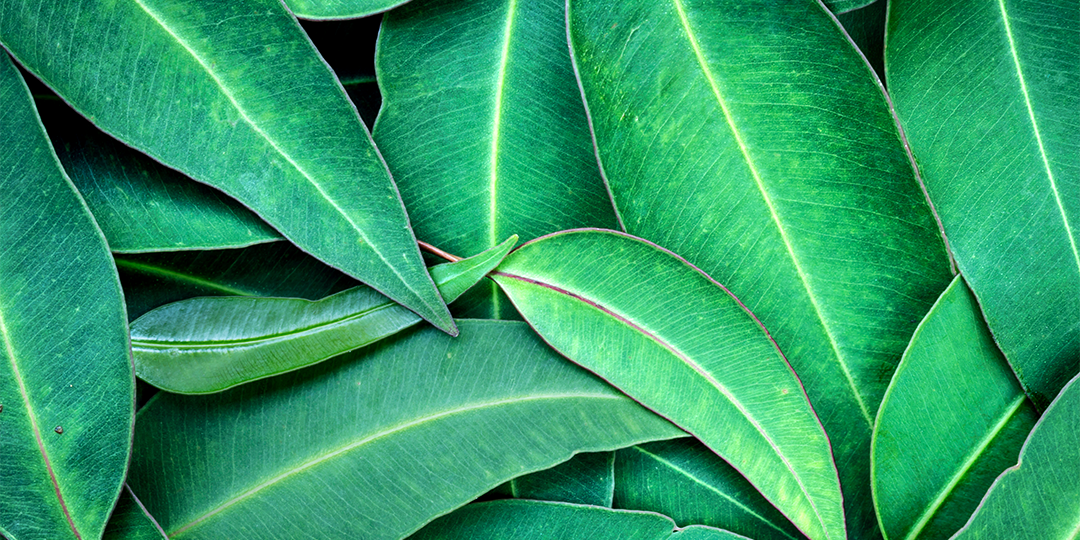Phytogenic ingredients in the spotlight: Eucalyptus - not only the favorite plant of the koalas (part 5)
Wow - so now we are right in the middle of the eucalyptus story! The first parts are about the history, the origin and the active ingredients of this unique plant. But we want to dive a little bit deeper into the spheres of action of eucalyptus. Coming along?
Selected modes of action of eucalyptus

From the extensive repertoire and effects of eucalyptus, we have put together a small but powerful selection of properties and hope you find them as exciting as we do.
Antimicrobial effects
A problem of global significance - the increasing bacterial resistance to conventional antibiotics, not only in humans, but also in animals, used for food production. The traditional medical application of eucalyptus indicates considerable antimicrobial properties, that’s why many eucalyptus. species (e.g. Eucalyptus. globulus, E. citriodora, E. camaldulensis) respectively their essential oils, have been examined (Sabo and Knezevic, 2019). The essential oils from aromatic plants have shown big potential to counteract microbes by reason of their secondary metabolites, talking mostly of phenols and oxygen-substituted derivates, by inhibiting microbial growth.
The major compounds of eucalyptus essential oils have shown to act against many microbes, including bacteria and fungi, and have been determined to inhibit spore production and germination (Raho, 2017).

Damjanović-Vratnica et al. (2011) showed that the essential oil of E. globulus has a rather strong antimicrobial activity against selected gram-positive and gram-negative bacteria (Streptococcus pyogenes, Escherichia coli, Staphylococcus aureus, Acinetobacter baumannii, and Klebsiella pneumoniae) and Candida albicans fungi, applying the plate diffusion and broth microdilution methods. In this study, the minimum inhibitory concentration (MIC) revealed the highest activity against S. aureus, E. coli, and S. pyogenes (0.09 mg/ml).
Also, Raho and Benali (2012) examined the antimicrobial properties of the essential oil of the leaves of E. globulus in vitro and confirmed antimicrobial activity against gram negative (E. coli) and gram positive (S. aureus) bacteria. With increasing essential oil concentration, the bacteria inhibitory effect was seen more significantly. Next to E. globulus, also the essential oils from E. maideni, E. astrengens, E. cinerea, and E. bicostata showed high antibacterial activity against Listeria ivanovii and Bacillus cereus (Sebei et al., 2015).
Apparently, it seems to be the chemical composition of the oils, determining the antimicrobial characteristics, with the major compounds being responsible for the antimicrobial property. Nevertheless, one should also consider the smaller components, since their synergistic, additive, and even antagonistic effect can´t be excluded so far (Mulyaningsih et al., 2011).
Though results seem rather promising, there are still many questions to be answered before the precise mode of action is revealed, thus explaining the limiting factor of EOs and their extracts being used as antimicrobials in the ongoing battle against bacterial pathogens, respectively their resistance versus antibiotics (Sabo and Knezevic 2019).
Antioxidant properties

Though the research on Eucalyptus has largely focused on the bioactive compounds of the essential oil and showing important antibacterial characteristics, there are also studies, that deal with chemical composition of extracts and antioxidant properties. Not least as leaf extracts of E. globulus have always been used as food additive as well – precisely due to these antioxidant qualities (Dezsi et al., 2015; Boulekbache-Makhlouf et al., 2013).
Phenolic compounds in extracts of Eucalyptus seem to play an important role and are often associated with positive health benefits like anti-cancer mechanisms, anti-inflammatory properties, antioxidant and antimicrobial properties.
Additional info
Oxidative reactions are the basis for metabolic processes in the cell, needed to generate energy. During cellular metabolism reactive oxygen species (ROS) are produced. Due to their reactive nature, ROS can damage cell walls, like stones hitting and breaching the fortified walls of a medieval city. These ROS can be neutralized by endogenous antioxidant mechanisms and radical scavengers like polyphenols. An imbalance in this system, also called oxidative stress, especially due to increased oxidative processes, can then lead to cell and tissue damage. For its protection, the organism faces the reactive oxygen species with antioxidants. These antioxidants release an electron by themselves and thus, inducing the termination of radical chain reactions, or they degrade the oxygen species enzymatically.
Study results suggest antioxidant properties of eucalyptus...

...In a study of Deszi et al. (2015), the antioxidant potential of the two species (Eucalyptus globulus Labill. and Corymbia ficifolia) was tested in vitro and reflected in their ability to block the process of lipid peroxidation, confirming the relation between antioxidant activity of plant derived extracts and chemical composition.
But not only in vitro, also in vivo study results suggested antioxidant capacity of eucalyptus. The essential eucalyptus oil decreased oxidative damage when administered to rats (200 μL/h, daily via inhalation 15 min) that were being forced to swim until exhaustion. Eucalyptus oil aromatherapy reduced markers of oxidative damage, such as xanthine oxidase (XO) and malondialdehyde (MDA), as well as the production of the inflammatory marker myeloperoxidase (MPO) in the liver tissue. Whereas markers of antioxidant capacity glutathione (GSH), superoxide dismutase (SOD), catalase (CAT), and glutathione peroxidase (GPx) stability were maintained, thus showing mitigation of oxidative damage and inflammation in tissues due to the Eucalyptus oil (Lin et al. 2018).
Good antioxidant effects were also observed in chickens, when being administered Eucalyptus leaf polyphenols extract. The improved antioxidant status appeared to be explained by enhanced GSH-Px (glutathione peroxidase) activity and reduced MDA content in muscle tissues. Glutathione metabolism and the peroxisome obviously were the two crucial metabolic pathways responsible for the upregulation of antioxidant enzymes. Certain genes and proteins, related to improved antioxidant status, were found, representing a promising basis for further research on these altered proteins (Li et al., 2020).
References upon request.

Click here to get more information about eucalyptus

Elisabeth Rohrer
After her study in agriculture sciences at the university of natural resources and life sciences in Vienna, Elisabeth joined the Delacon team in December 2013 as Technical Communications Manager - a position, she always exerted with pleasure. Since 2021, her task areas have been extended and thus, she is also supporting colleagues in writing offside the technical focus as Content Manager. Elisabeth describes herself as a great animal and nature lover and prefers to spend her free time high up in the mountains with her little family, away from the hustle and bustle.











Loved reading this, since I am interested in the research for the 'holy grail' of Plant Alkaloids.
The treasure trove of nature can open up the doors to many new frontiers in Medicine and Science, however we have to give nature the same respect, care and significance that we give to man made concepts like, religion, economy etc.